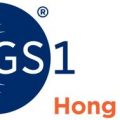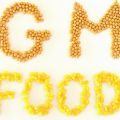A policy mandating barcoding system on all medicine and health products has been issued by the Philippines’ Food and Drug Administration (FDA) as a means to ensure patient and consumer safety.
Not-for-profit organization GS1 Philippines has expressed confidence on FDA Circular 2014-011 as the barcoding system will enhance patient safety.
It will enhance health product safety through “traceability.” It ensures products released to the market are tracked wherever it is found in the distribution system–from factories, storage, and stores– and may be withdrawn if found harmful to human health.
The right medicine may be administered on patients because the barcodes assures of the authenticity of the product.
“The use of barcode now is for billing, not for patient care. But its primary use should be for patient safety. The advantage is for traceability of products,” said Jose A. Albert, president of GS1 Philippines.
“There are many cases of mis-medication, and there have been records of death around the world. But this system tracks and traces everything that moves. If you’re able to do that in the hospital, you can double check drugs being administered on a patient,” said Albert.
The FDA circular takes effect by June 2014, or one year from its issuance last April 29.
The circular was signed by FDA Director Kenneth Y. Hartigan-Go as part of ensuring that any drug found to be harmful to patients may be immediately withdrawn.
The circular notes that FDA has all the authority, after due process, “to order the ban, recall and or withdrawal of any health product found to have caused the death, serious illness or serious injury to a consumer or patient… or is found imminently injurious, unsafe, dangerous, or grossly defective.” This is under Republic Act 9711 which created the FDA.
The system compels health product manufacturers to have a barcode on their products that have unique numbers. It also called Unique Global Product Identification Number.
This way, all products may be differentiated from each other, easily identifying the ones that are counterfeit.
GS1 is an organization that extends technical aid on the use of the barcoding system. GS1 is present in more than 100 countries.
The policy may pave the way to consumer empowerment. Using his own device, which in the future may include mobile phones, a consumer may be able to identify authenticity of a product.
“If you’re a buyer, you can scan the bar code. With the proper application, you could connect to a website that would tell you where that product is supposed to be. So you know if it’s not supposed to be there or may be stolen. If somebody’s number is copied, you can check if the number is copied,” said Albert.
FDA indicated that the barcoding system will use unique numbers for accurate identification of products. This system is implemented universally, strengthening enforcement of laws against counterfeit products.
This is in light of increasing case of distribution of fake drugs, including reportedly viagra.
It is a system recognized by the World Customs Organization and World Health Organization.
“A global product identification system facilitates execution of risk management plans including recalls and bans, and enables global identification of products manufactured in the Philippines by local companies,” according to the circular.
The system is a time-saver.
“The system is expected to reduce the time entailed in clearing products through borders, facilitating trade and improving traceability,” said the circular.
For those products seeking registration with FDA, a Global Trade Item Number (GTIN) or any other identification system will be assigned to new products. This is for the promotion of accountability.
Under the system, each manufacturing batch is assigned a unique number through which any defective batch of manufactured medicine will be identified.
The packaging, labels, or containers of products should bear the unique product identification number.
“Appropriate identification graphics must be displayed on the product exterior that allows verification by readily available electronic scanners,” Circular 2014-011 said.
Some drug manufacturers are already putting the system in place even if deadline for the circular’s implementation has not yet come.
“They want to protect their products from fake ones,” Albert said.
The barcoding system may also bring down cost of medicine and health products due to efficiency in the supply chain—the trail from raw materials to manufacturing, distribution, and market.
“If you want supply chain efficiency, there will be benefit. There will have to be cost, but the cost vis a vis the benefit will bring down cost of health care. the move. The cost of health care is going up, but we’re trying to bring it down,” Albert said.
Hospitals have also started studying adoption of the barcoding system.
“Most hospitals are looking at how to do it. The move is really there,” said Albert.
The allotment to a product of the unique numbers is a system administered by GS1.
Each country has a specific code, so that the source of manufacturing can be identified.
“You have to be sure numbers are unique worldwide. Somebody has to be responsible for every country. GS1 takes responsibility for this. Those numbers are controlled,” said Albert.
###
For any questions or interview requests, please contact Ms. Analiza C. Mendoza, 0921-338-3816, 0916-266-6604; Mr. Jose A. Albert, 639-0557, 708-9798. Please see attached circular or follow this link: http://www.fda.gov.ph/issuances/153598-fda-circular-no-2014-011





